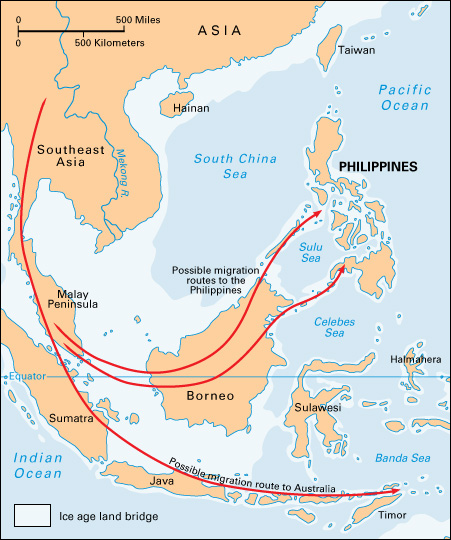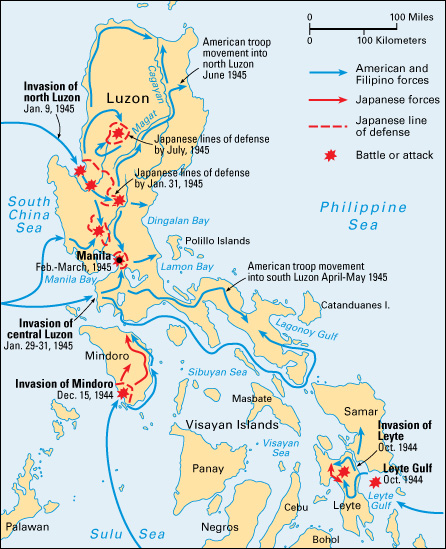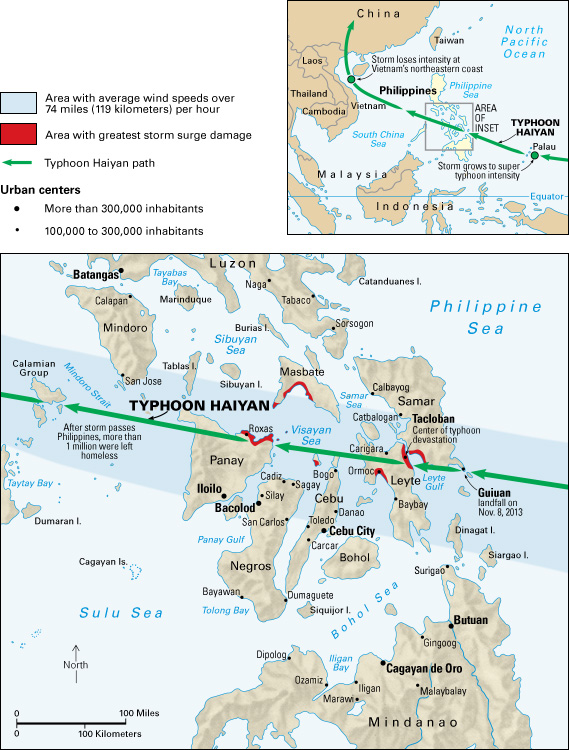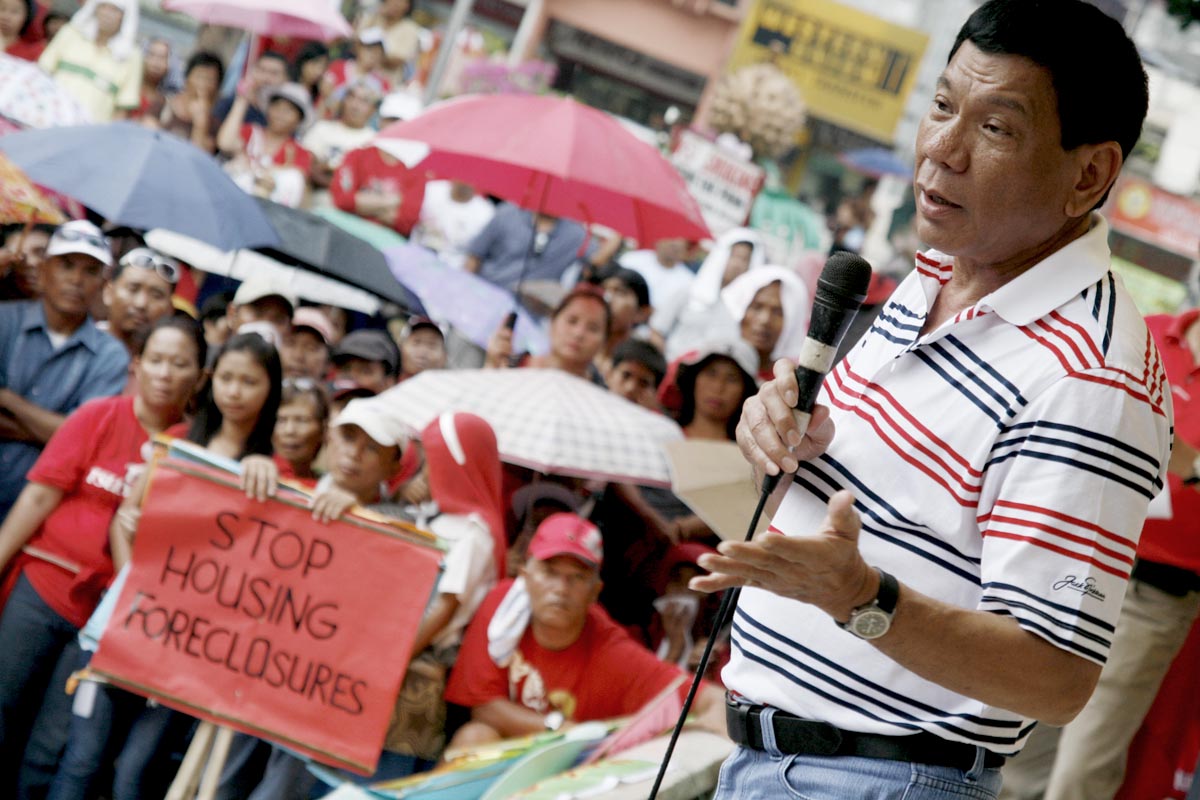Philippines, History of the. The ancestors of the people of the Philippines were migrants from mainland Southeast Asia, and from what are today Indonesia and Malaysia. Groups of these migrants formed small communities throughout the islands, and each group developed its own culture.

Spanish explorers colonized the Philippines in the 1500’s. They named the islands after King Philip II of Spain. In 1898, Spain sold the Philippines to the United States as part of the treaty that ended the Spanish-American War. Philippine nationalists attempted to gain independence for the islands, but the United States stopped the rebellion and established a colonial government.
The Philippines became a self-governing commonwealth of the United States in 1935. From 1942 to 1944, during World War II, Japanese forces occupied the islands, but they faced considerable resistance from guerrilla groups. The United States granted independence to the Philippines on July 4, 1946.
Early days.
A group of Negritos called the Aeta were probably the first people who lived in the Philippines. Negritos are Indigenous (native) peoples of Southeast Asia. Anthropologists think the Aeta came to the Philippine islands from the Southeast Asian mainland more than 30,000 years ago. About 3000 B.C., groups of people who spoke a language related to Malay began to settle along the coasts of the islands. As newcomers arrived, the earlier settlers moved inland and formed small communities. Each group developed its own culture.
Spanish settlement and rule.
In 1521, a Spanish expedition led by Ferdinand Magellan arrived in the Philippines. Magellan was killed in a battle with Indigenous warriors several weeks after arriving, and his fleet later departed for Spain. In 1565, a group of Spanish explorers led by General Miguel López de Legazpi established a base at what is now Manila. From their base, the Spaniards sent out expeditions and soon gained control of other lowland areas of the Philippines. But they were unable to control the communities in the mountainous areas of northern Luzon and the Muslims on Mindanao until the late 1800’s.
The Spaniards ruled the Philippines from Manila under the Viceroy of Mexico. Colonial officials and religious orders received land grants from the Spanish Crown. The Spaniards employed Filipinos as tenant farmers, laborers, and servants. They also used Filipinos as forced labor to build forts and ships. Spanish priests converted most of the Filipinos to Roman Catholicism.
Revolt against the Spaniards.
After the Spanish colony of Mexico became independent in 1821, Spain began to rely more on the Philippines for revenue. It opened the islands to foreign trade and began using their natural resources to produce agricultural and mineral goods for the world market. As a result, the Philippine economy grew rapidly. Wealthy Filipinos began sending their children to universities in Manila and Europe. After these young people returned home, they began to seek political and social freedom for the Philippines. They became known as ilustrados (enlightened ones). Their main leader was José Rizal, a physician and writer whose novels exposed abuses by Catholic friars in the Philippines. The Spaniards executed Rizal in 1896, but his death inspired more resistance against Spain.

In 1892, an office clerk and admirer of Rizal named Andrés Bonifacio formed a secret revolutionary society called Katipunan. In 1896, this group declared its commitment to seek independence for the Philippines. It then led a series of uprisings in Manila and nearby provinces. Conflict within Katipunan led to Bonifacio’s execution by his comrades. His rival Emilio Aguinaldo then took over leadership of the revolution. Within a year, Aguinaldo agreed to leave the Philippines in exchange for political reforms by the Spaniards. He then went into exile in Hong Kong. Despite Aguinaldo’s absence, uprisings continued in the Manila area.
During the late 1800’s, the Spaniards finally succeeded in conquering the Muslims on Mindanao with improved naval weapons. They also conquered the people of the northern Luzon mountains. However, Spanish rule was weakening in other parts of the Philippines.
The Spanish-American War.
In April 1898, the United States declared war on Spain. The war involved the issue of liberating Cuba, another Spanish colony. On May 1, in the first important battle of the war, the U.S. fleet destroyed all the Spanish ships in Manila Bay. Two weeks later, Aguinaldo returned to the Philippines on a U.S. warship. He then led a Philippine revolutionary army against the Spaniards. His forces helped the Americans defeat the Spaniards. On June 12, Aguinaldo declared the Philippines independent from Spain. The fighting on the islands ended in August. In December, the United States and Spain signed a peace treaty. The United States gained possession of the Philippines and paid Spain $20 million for the islands. The treaty negotiations did not include representatives from the Philippines, or from the other territories that Spain handed over to the United States. See Spanish-American War.

Aguinaldo declared the establishment of the Philippine Republic on Jan. 23, 1899. In February, his forces began fighting U.S. troops. This conflict became known as the Philippine-American War. The Americans captured Aguinaldo in March 1901, and the fighting officially ended about a year later. However, Philippine forces continued to stage guerrilla attacks on U.S. forces for about 10 more years. The Philippine-American War resulted in the deaths of more than 4,000 U.S. soldiers and about 20,000 Philippine soldiers. Hundreds of thousands of Philippine civilians died in the crossfire or from disease and famine.
American rule.
In 1901, the United States set up a colonial government in the Philippines. William Howard Taft, a U.S. federal judge who later became president of the United States, served as the first civilian governor. The colonial government established a public school system with English as the primary language of instruction. American businesses, especially those in the hemp, rubber, and sugar industries, made large investments in Philippine operations that had the United States as their main market.
In the early 1900’s, the United States recruited Filipinos to fill colonial government positions. It did so partly because of a personnel shortage, and partly because it had promised to eventually grant Filipinos their independence. The United States also helped Filipinos form political parties that would send representatives to an all-Philippine legislative assembly in 1906. In 1914, the United States turned over all but a few positions in the colonial government to Filipinos. In 1935, the Philippines became a commonwealth with its own elected government and a constitution modeled after that of the United States. Manuel L. Quezon became the first president of the commonwealth government. The United States retained authority in such areas as foreign affairs and national defense of the Philippines.
Japanese control.
On Dec. 7, 1941, Japanese planes bombed Pearl Harbor, a U.S. naval base in Hawaii. On December 8, the United States entered World War II. That same day, Japanese troops began to invade the Philippines. United States general Douglas MacArthur led U.S. and Philippine forces in fighting these Japanese troops until March 1942. After MacArthur was ordered to Australia, U.S. lieutenant general Jonathan M. Wainwright took command of his troops. Many of these troops surrendered to the Japanese in April, though Wainwright and a smaller group held out until May. Most of the American and Philippine soldiers were imprisoned. But others escaped to the mountains and formed guerrilla groups.
MacArthur returned to the Philippines with additional troops in October 1944 and defeated the Japanese several months later. The war hurt the Philippine economy badly and destroyed most of Manila.

Independence.
The United States granted the Philippines complete independence on July 4, 1946. The Republic of the Philippines was established, with Manuel Roxas as its president and Manila as its capital. In 1948, Quezon City became the official capital, but Manila remained the seat of the government. In 1976, President Ferdinand Edralin Marcos reestablished Manila as the official capital by decree.
During the late 1940’s, the Philippines experienced political conflict, as well as poverty caused by World War II. A Communist guerrilla movement called Hukbong Magpapalayang Bayan (People’s Liberation Army) launched a military offensive to try to overthrow the government. The movement, also called Hukbalahap and Huk, sought to divide the estates of wealthy landowners into small lots and give the land to poor farmers. The Philippine Army, which had been fighting the Huk movement since the Japanese occupation, was able to defeat it in 1954 with support from the United States.
The Philippines also faced economic problems after gaining independence. The United States sent economic aid to the Philippines, but the young nation’s economy showed little growth. In 1950, the United States promised the Philippines more economic aid, in exchange for the right to maintain many U.S. military bases in the country. The largest of these bases were Clark Air Base and Subic Bay Naval Station, both on Luzon. The Philippine government placed restrictions on imports in order to keep money from leaving the country, and thus provide funds for local industries. The economy began to improve, and farmers gained access to modern methods of agriculture. However, the new policies were not enough to overcome poverty or sustain economic growth. In the early 1960’s, the government reversed many of the policies. It lifted restrictions on imports and began promoting more open trade.
The Marcos era.
In 1965, Ferdinand Edralin Marcos was elected president of the Philippines. As president, he sponsored a law that encouraged foreign companies to establish factories in the Philippines. Marcos was reelected as president in 1969.
The late 1960’s and early 1970’s saw a revival of antigovernment activities by Philippine Communists. The Communist Party of the Philippines (CPP) was formed in 1968. It organized peasants and created the New People’s Army, which attacked military installations. Also during the 1970’s, Muslim separatist groups emerged in the southern Philippines. They launched armed uprisings in an effort to establish self-ruling Muslim regions.
In 1972, President Marcos declared martial law (military rule) in the Philippines. In 1973, Marcos announced a new constitution that gave him the powers of both president and prime minister for an unlimited term. Marcos ended martial law in January 1981. In June, he was reelected president in an election widely regarded as fraudulent.
In 1983, upon returning to the Philippines from self-imposed exile in the United States, Benigno Simeon Aquino, Jr., was assassinated. Aquino, nicknamed Ninoy, was Marcos’s leading political rival. Thousands of Filipinos demonstrated to express their anger over the killing. Followers of Aquino charged the government with playing a role in his death. The armed forces’ chief of staff, 24 other military personnel, and one civilian were prosecuted for Aquino’s murder. A court acquitted all of the accused in 1985, but the acquittal was overturned in 1986, after Marcos’s presidency had ended. In 1990, 16 military personnel were convicted of the assassination and sentenced to life in prison.
Public unrest due to political and economic conditions led Marcos to announce an early presidential election to be held in February 1986. Marcos sought to restore his credibility as a political leader. Corazon Aquino, also called Cory, was Marcos’s chief opponent in the election. She was the widow of Benigno Aquino, Jr. Following the vote, the National Assembly ruled that Marcos had won. But many Filipinos, including Roman Catholic bishops, accused Marcos of election fraud. Military officers tried but failed to overthrow the government. However, strong public opposition to Marcos forced him to flee the Philippines. Corazon Aquino then became president.
The Marcos administration left behind serious economic problems. In 1988, the U.S. government charged Marcos with stealing millions of dollars from the Philippines. In addition, the Philippines owed billions of dollars to foreign banks. Marcos died in 1989.
Recovering democracy.
In February 1987, Filipinos voted to approve a new constitution, under which Aquino would serve as president until 1992. Aquino’s presidency was far from stable. She faced opposition from Marcos’s supporters; from military personnel who objected to negotiations with Communist guerrillas; and from groups, including Communists, who opposed U.S. influence in the Philippines. Members of the military tried several times without success to overthrow Aquino’s government. In 1992, Fidel V. Ramos was elected president. Ramos had served as deputy chief of staff of the armed forces under Marcos, and as defense minister under Aquino.
In 1991, Mount Pinatubo, a volcano northwest of Manila on Luzon, erupted. More than 800 people were killed. Clark Air Base was buried under ash and abandoned. The treaty allowing the United States to maintain military bases in the Philippines expired in 1992. The Philippine Senate rejected a proposed new treaty, despite popular support for the agreement. The United States then withdrew its forces from the Philippines. 
In 1996, the Philippine government signed a peace agreement with the Moro National Liberation Front (MNLF), a Muslim separatist group that had been fighting against the government since the 1970’s. The agreement created a region of self-rule for Muslims in the southern Philippines, but it did not bring peace. Two new separatist groups—the Moro Islamic Liberation Front (MILF) and the more radical Abu Sayyaf Group (ASG)—broke away from the MNLF. Both continued fighting against Philippine troops, and the ASG committed terrorist acts.
In 1998, Joseph Estrada, then vice president of the Philippines under Fidel Ramos, was elected president. Estrada was also a motion-picture actor.
The early 2000’s.
Estrada was accused of corruption in 2000. He denied the charges and refused to resign, despite widespread protests. The Philippine House of Representatives voted to impeach Estrada. He would be charged with wrongdoing, tried in the Senate, and, if convicted, removed from office. In 2001, before the Senate had reached a verdict, Estrada lost the support of most politicians and the armed forces. Amid continued protests, he was forced to step down. Vice President Gloria Macapagal-Arroyo then became president.

In 2001, the Philippine government began peace negotiations with the Moro Islamic Liberation Front. But the government refused to negotiate with the Abu Sayyaf Group, because the ASG used terrorist methods. In 2002, with help from the United States, the government launched military operations against the ASG that reduced support for the group. In the following years, ASG activities declined notably.
In 2003, several members of the Philippine military tried but failed to overthrow the Macapagal-Arroyo government. Filipinos elected Macapagal-Arroyo president in 2004. In 2007, former president Joseph Estrada was found guilty of corruption and sentenced to life in prison. However, Macapagal-Arroyo pardoned him. In 2010, Macapagal-Arroyo ran successfully for the House of Representatives. That same year, Benigno Simeon Cojuangco Aquino III was elected president. The new president, nicknamed Noynoy, was the son of former politicians Benigno Aquino, Jr., and Corazon Aquino.
In November 2013, Typhoon Haiyan, also called Typhoon Yolanda, struck the Philippines. The storm caused enormous destruction in the central islands. It also killed about 6,300 people and left more than 1,000 others missing. 

In 2014, after years of negotiations, the Philippine government and the Moro Islamic Liberation Front signed a peace agreement. Under the agreement, the government pledged to create an autonomous Muslim region in exchange for an end to the MILF’s armed rebellion. In 2019, the Bangsamoro Autonomous Region in Muslim Mindanao (BARMM) was formally established in western Mindanao and on smaller islands to the southwest.
In 2016, Filipinos elected the controversial politician Rodrigo Duterte as president. Duterte had served seven terms as mayor of Davao, a city in southern Mindanao. While mayor, Duterte claimed to be using vigilante groups to assassinate drug dealers and people addicted to drugs. Such claims did not diminish Duterte’s popularity, and he promoted his image as a punisher of criminals during his presidential campaign. As president, Duterte launched a “war on drugs.” The Philippines then experienced a widespread increase in vigilante killings of suspected drug dealers and users. Human rights organizations expressed alarm, but Duterte dismissed any criticism. 
The COVID-19 pandemic (global epidemic) that began in 2020 strongly impacted the Philippines’ public health and strained its economy. Early in the pandemic, the Philippine Congress passed legislation granting the president broad emergency powers. The legislation allowed the government to impose curfews and other restrictions on people’s movements to contain the disease. As of early 2023, there had been more than 4 million confirmed cases of COVID-19 in the Philippines, and more than 65,000 confirmed deaths from the disease. By then, however, a majority of Filipinos had received some protection in the form of COVID-19 vaccines.
Ferdinand Marcos, Jr., the son of former president Ferdinand Edralin Marcos, was elected as president of the Philippines in May 2022. Sara Duterte, the daughter of President Rodrigo Duterte, was elected separately as vice president. The new president and vice president took office in June.
